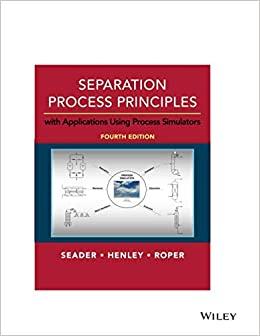Question
0.523 g of magnesium metal was weighed into a styrofoam calorimeter. Next, 60 mL of 1.0 M hydrochloric acid, weighing 60.488 g and having an
0.523 g of magnesium metal was weighed into a styrofoam calorimeter. Next, 60 mL of 1.0 M hydrochloric acid, weighing 60.488 g and having an initial temperature ( i.e. Ti ) of 20.8 oC, was added to the calorimeter. The solution was then stirred and temperatures were recorded as the reaction took place and for more than 300 seconds after the system temperature 'peaked' (see the table on page 14 of 18:170 lab manual)
1) Plot the tabulated data on the graph provided on page 15 of the lab manual. Draw the straight line that best fits the 'cooling curve of the system (i.e. best fit only the data in the cooling part of the temperature/time plot) and determine the theoretical value of the final temperature (i.e. Tf) by extrapolating the best fit line to intersect with the Y-axis. Enter your answer for Tf to the nearest tenth of oC. (Note: enter degC for oC.)
0.523 g of magnesium metal was weighed into a styrofoam calorimeter. Next, 60 mL of 1.0 M hydrochloric acid, weighing 60.488 g and having an initial temperature ( i.e. Ti ) of 20.8 oC, was added to the calorimeter. The solution was then stirred and temperatures were recorded as the reaction took place and for more than 300 seconds after the system temperature 'peaked' (see the table on page 14 of 18:170 lab manual)
1) Plot the tabulated data on the graph provided on page 15 of the lab manual. Draw the straight line that best fits the 'cooling curve of the system (i.e. best fit only the data in the cooling part of the temperature/time plot) and determine the theoretical value of the final temperature (i.e. Tf) by extrapolating the best fit line to intersect with the Y-axis. Enter your answer for Tf to the nearest tenth of oC. (Note: enter degC for oC.)
2) Calculate the theoretical change in temperature which would have occurred in the solution as the result of this reaction.
3) If the final mass of the product in the container is 60.829 g, calculate the average of initial (reactants) and final (product) mass.
4) Assuming that the overall heat capacity of the solution is 4.186 J oC-1 g-1, calculate the amount of energy (Q) absorbed by the final solution.
5) How many moles of magnesium were used to create this amount of heat energy?
6) Calculate the enthalpy of reaction (viz. H1, see below) when 1 mole of magnesium is reacted.
7) Assuming that H2 was measured experimentally to be 156 kJ/mol, and using the value of -285.8 kJ/mol from the literature for H3, calculate (using Hess's Law) the standard molar enthalpy of formation of magnesium oxide (i.e. Hf).
Mg(s) + 2H+(aq) Mg2+(aq) + H2(g); H = H1 = __________kJ mol-1
Mg2+(aq) + H2O(l) MgO(s) + 2H+(aq); H = H2 = __________kJ mol-1
O2(g) + H2(g) H2O(l) ; H = H3 = __________kJ mol-1
Overall: Mg(s) + O2(g) MgO(s) Hf = __________kJ mol-1
Step by Step Solution
There are 3 Steps involved in it
Step: 1

Get Instant Access to Expert-Tailored Solutions
See step-by-step solutions with expert insights and AI powered tools for academic success
Step: 2

Step: 3

Ace Your Homework with AI
Get the answers you need in no time with our AI-driven, step-by-step assistance
Get Started


